


John Bowley LRIBA (26 July 1864 - 28 January 1938) was an architect and engineer based in England [1] who worked mainly in Beeston, Nottinghamshire and Hastings.



John Bowley LRIBA (26 July 1864 - 28 January 1938) was an architect and engineer based in England [1] who worked mainly in Beeston, Nottinghamshire and Hastings.
He was educated at University of Nottingham and the Nottingham School of Art.
He was articled to J.W. Eardley of Derby from 1881 to 1884 and assistant until 1886 until he moved to be assistant to W.E. Woolley of Loughborough where he stayed until 1889. He then started his own practice in Beeston at lived at 39 Dovecote Lane.
In 1896 when he moved to Hastings, initially living at 29 Old London Road. He was appointed Architect to Hastings Town Council. He was also resident engineer to the Eastbourne Waterworks Company and consulting surveyor to the Devonshire Park Company. [2] He was also surveyor to the Compton Estate from 1911 to 1927.
He was appointed Licentiate of the Royal Institute of British Architects in 1910. [3]
He was born on 26 July 1864 in Ratclife on Soar, the son of Thomas Cross Bowley (1830-1865) and Frances Chadfield (1831-1881).
He married Elizabeth Jane Fertel (1862-1912) in April 1885 and they had two children:
He married secondly Margaret McLean Agnew in Eastbourne in 1913.
He died on 28 January 1938 in Eastbourne and left an estate valued at £1,540 5s. 1d. His funeral service was held at St Andrew's Presbyterian Church, Eastbourne on 31 January 1938. [2]

Attenborough is a village in the Borough of Broxtowe in Nottinghamshire, England. It forms part of the Greater Nottingham area and is 4+1⁄2 miles (7.2 km) to the south-west of the city of Nottingham, between Long Eaton and Beeston. It adjoins the suburbs of Toton to the west and Chilwell to the north. The population of the ward, as at the 2011 Census, was 2,328.

Frederick Ball LRIBA was an architect based in Nottingham. He was Sheriff of Nottingham from 1906–07, and Mayor of Nottingham from 1913–1914.

Harry Gill LRIBA was an architect based in Nottingham.
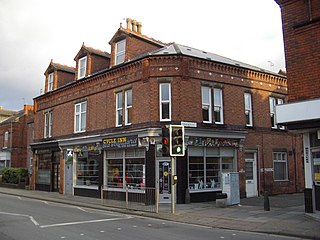
Walter Owen Hickson was an architect and surveyor based in Nottingham.
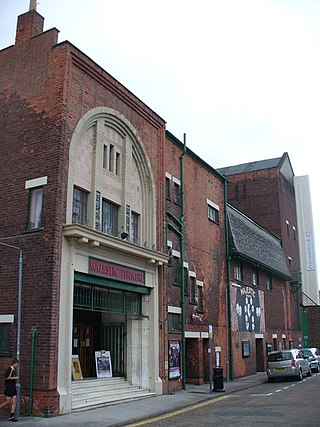
Alfred John Thraves FRIBA was an architect based in Nottingham who specialised in cinema design.
St John's Grove, Beeston is a conservation area in Beeston, Nottinghamshire.
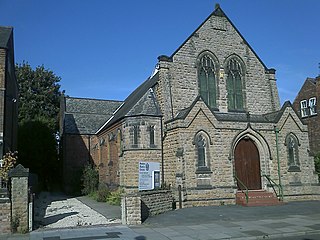
Charles Nelson Holloway was an architect based in Nottingham.

Arnold Plackett LRIBA was an 20th century architect based in Long Eaton.

Joseph Warburton LRIBA MRAIC was an 20th century architect based in Beeston, Nottinghamshire and Regina, Saskatchewan.

High Road, Beeston is a pedestrianised shopping street in Beeston, Nottinghamshire. It runs from Beeston Square to Humber Road.
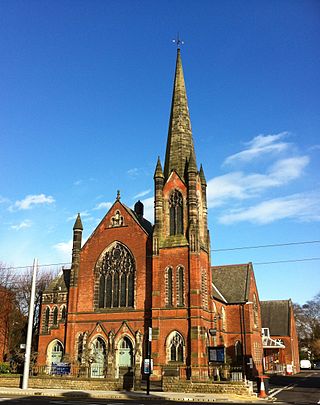
Chilwell Road, Beeston is street in Beeston, Nottinghamshire. It runs from its junction with High Road, Beeston in Beeston Square to the Hop Pole public house.

Station Road, Beeston is street in Beeston, Nottinghamshire. It runs from its junction with High Road, Beeston in Beeston Square to Beeston railway station.

Beeston Fields Drive is a street in Beeston, Nottinghamshire, England. It runs from its junction with Wollaton Road, Beeston, to Cow Lane, Bramcote.

George Francis Grimwood LRIBA was an 20th century engineer and architect based in Nottingham.

James Huckerby was a 19th-century builder and architect based in Beeston, Nottingham.

John Frederick Dodd LRIBA was an architect based in Long Eaton, Derbyshire.

Alexander Wilson LRIBA was an architect based in Nottingham. Some of his most significant work include the 900 houses built on the Beeston Rylands estate in the late 1930s.
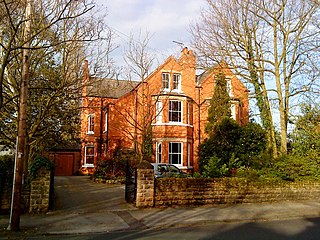
Thomas Woolston was an architect and builder.
Douglas Leonard Booth was an architect, surveyor and civil engineer based in Beeston, Nottinghamshire.

Field Weston was an architect based in Nottingham.